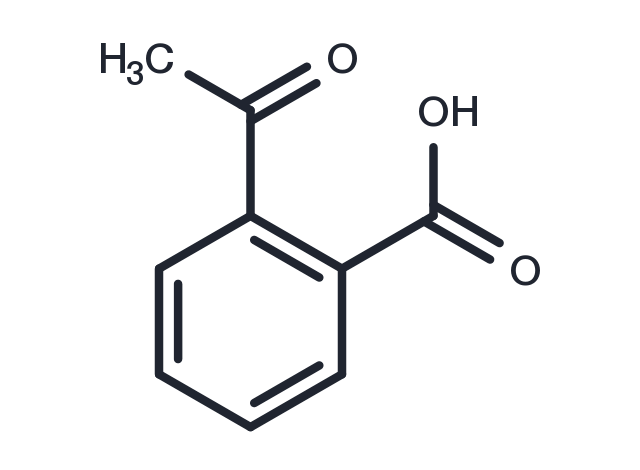Powder: -20°C for 3 years | In solvent: -80°C for 1 year


2-Acetylbenzoic acid is more potent than 2-propionyloxybenzoic acid in inhibiting platelet function and platelet prostaglandin (PG) synthesis although the potencies of these agents were comparable in inhibiting prostacyclin (PGI2) synthesis.

| Pack Size | Availability | Price/USD | Quantity |
|---|---|---|---|
| 20 mg | In stock | $ 50.00 | |
| 1 mL * 10 mM (in DMSO) | In stock | $ 50.00 |

| Description | 2-Acetylbenzoic acid is more potent than 2-propionyloxybenzoic acid in inhibiting platelet function and platelet prostaglandin (PG) synthesis although the potencies of these agents were comparable in inhibiting prostacyclin (PGI2) synthesis. |
| In vitro | A series of benzoic acid derivatives was tested for specificity of action on human platelet function and platelet prostaglandin (PG) synthesis versus prostacyclin (PGI2) production by rat and rabbit aorta rings. None of the agents tested was more specific for one system than the other. ASA was more potent than 2-propionyloxybenzoic acid (2-PBA) in inhibiting platelet function and platelet PG synthesis although the potencies of these agents were comparable in inhibiting PGI2 synthesis. 3-Propionyloxybenzoic acid (3-PBA) caused increased activity in both systems while 2-Acetylbenzoic acid had only minor effects. A cyclical derivative, 3-methylphthalide (3-MP), inhibited both platelet function and PGI2 synthesis although it did not inhibit cyclo-oxygenase activity, suggesting a novel mechanism of action[1]. |
| Source |
| Molecular Weight | 164.16 |
| Formula | C9H8O3 |
| CAS No. | 577-56-0 |
Powder: -20°C for 3 years | In solvent: -80°C for 1 year
DMSO: 55 mg/mL (335.04 mM)
You can also refer to dose conversion for different animals. More
bottom
Please see Inhibitor Handling Instructions for more frequently ask questions. Topics include: how to prepare stock solutions, how to store products, and cautions on cell-based assays & animal experiments, etc.
2-Acetylbenzoic acid 577-56-0 GPCR/G Protein Immunology/Inflammation Prostaglandin Receptor 2 Acetylbenzoic acid 2Acetylbenzoic acid inhibitor inhibit
